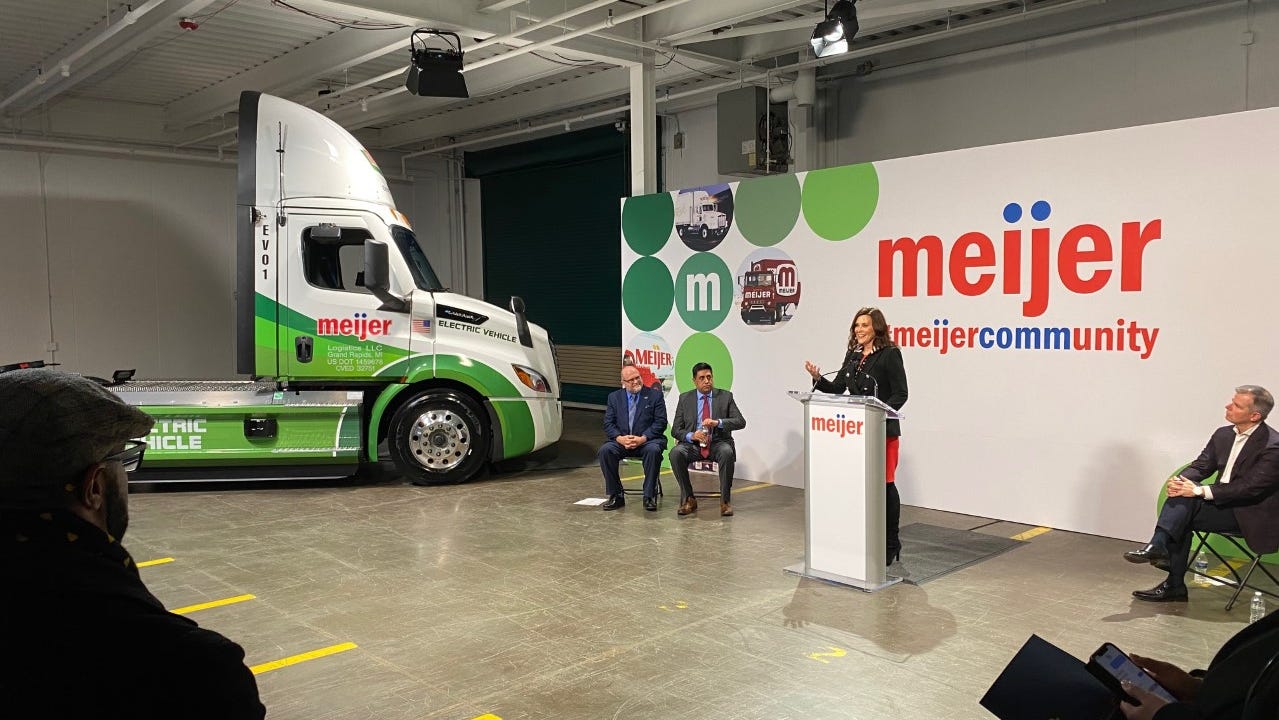This is a great video! Just spent over an hour watching and re-watching it. Thanks for sharing.
Notes below. Overall, this factory is significantly different from anything Tesla would build. It's "Custom mass production operation" and I doubt Tesla will ever start doing that.
It's also only assembly. Everything is shipped in highly assembled (cabs, engines, transmissions). Tesla casts parts on site.
"200 trucks a day, each one unique, built to customer specification". They keep repeating the "each unique" all the time. "no two cabs are the same"
This is the difference right there. Not just colors, but different engines, and 2 to 4 axles. 2 sizes of cabs, 650 color options! 420-750HP. 550+ tire thread patters and 100 types of rims. Microwaves, fridges. Different diesels tanks (not clear how many)
They have a huge "market adaption center for the seemingly infinite customization and special requests". That is after all the options above. If parts of the vehicle are desired in different colors. They may repaint a cab completely. This may be necessary because they are so customized. If you only sell one model, and the color is not what the customer wants, just give it to someone else. And if a customer wants something in pink, send them to a wrapping shop, or even a paint store. Volvo's motto is "anything is possible"
Any one working in that building is not needed at Giga Austin.
"logistics is important", especially if each truck is unique, and has so many parts. I agree that a Gigafactory can handle that.
E.g. they have to carefully sort the painted cabs in the parking lot because they come in the wrong order. In a Gigafactory, they just come down the line. Volvo has only 40 cabs on site, if they run out, they will miss customer delivery deadlines. Then they still have a large cab assembly building (after they get cabs shipped?).
Tesla just makes one 1000hp truck, that works for the whole range of required HP (and beyond). Much simpler. The motors are much lighter, too. Can just be dropped in. Volvo has to assemble huge engines, transmissions, alternators, then assemble that into the chassis. That step alone takes a while. I-Shift has two drive shafts, two clutches. So much complexity needed, even compared to the Tesla Semi setup with three motors and the auto clutch.
Ans the number of parts. 50 different bolts just for the basic frame assembly. 1000 cable ties per truck. 1500 individual parts installed in 210 operations over 8 hours. And this is the main final assembly, where the stuff comes already assembled.
For the air compressor, a different combination of air hoses is required for each model, and a machine has to cut the right combination of those is important. No two fixes are the same. The complexity, and training required for this is crazy.
It will be interesting to see how fast they re-tool this to EV manufacturing.
"this steps could be carried out differently in the future" - They are working at the "production operation of tomorrow". Using AR/VR. Not simpler manufacturing, or fewer parts. Just better training of humans. And exo-skeletons to lighten the load on workers (29 min in). Reduces the weight by 27kg, but doesn't make him faster. Just better for the health. This is just fighting symptoms, instead of the root cause.
One person even admits that they cannot deploy robots because they have too much customization.
What they are missing is a guy at the top who ask "why are we doing it this complicated way"
Mats, wall panels, loud speakers, all fitted by hand. Especially important the bed (two sizes). Some customer request two foldaway bunks. Tesla will not do any of this for years. 100 different switches and plugs for the instrument cluster. A Tesla probably has 10. Volvo not only assembles each one, but then has to check each one, too. It takes 5.5 hours to assemble a cab. Some trucks have microwaves. Nice to have, but stuff like this makes manufacturing extremely expensive.
The wind shield is installed by a robot. It's the first robot we see. The robot costs 2.5M Euros. "Important this task is performed by the robot, we need absolute precision". Tire mounting is also done by robots.
Also, they replace an invisible crack in a blinker cover. Tesla wouldn't do that

But after that audit, the guy drives the truck on a public road for 50km. What's the chance of getting another micro damage to the truck right there?
Chassis is 1800kg. Engine 2000kg, Cab 1300kg
It reminds me of my tour of the Toyota plant in Japan. They were so proud about the customization, and the many vehicles they can make there on a single line. And it was crowded, compared to Tesla Fremont, which is probably crowded compared to Austin or Berlin.

 www.core77.com
www.core77.com




